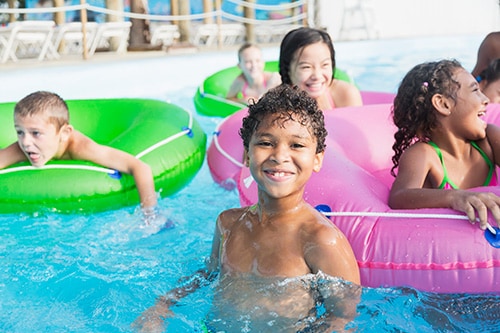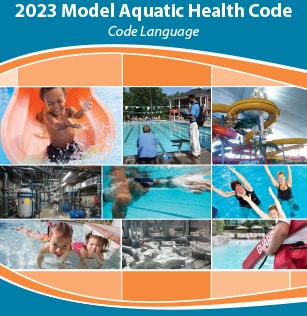The MAHC

Health jurisdictions and the aquatics sector can use the MAHC to make swimming and other water activities safer and healthier.
CDC’s Model Aquatic Health Code (MAHC) is guidance to prevent injury and illness linked to aquatic venues — such as pools, hot tubs, and splash pads — open to the public. This guidance brings together the latest science and best practices to help jurisdictions save time and resources when they develop and update pool codes. Pool codes regulate how aquatic venues that are open to the public are designed, constructed, operated, and managed. These codes address topics such as how aquatic facilities are built, how lifeguards are trained and certified, and how chlorine levels in the water are tested.
Using the MAHC can reduce health risks
The primary objective of the MAHC is to prevent injuries and illnesses at pools, hot tubs, and splash pads open to the public, including:
The MAHC applies to aquatic venues open to the public, which can be operated by:
- Hotels and motels
- Apartment complexes
- Homeowners’ associations
- Membership clubs (for example, gyms)
- Schools
- Waterparks
- Drowning. More children ages 1–4 die from drowning than any other cause of death. For children ages 5–14, drowning is the second leading cause of unintentional injury death after motor vehicle crashes.
- Pool chemical injuries. Pool chemical injuries account for about 4,500 emergency department visits each year. At least one third of the patients are less than 18 years old.
- Disease outbreaks linked to swimming. Over 200 disease outbreaks linked to pools, hot tubs, and splash pads occurred during 2015–2019. The leading cause of these outbreaks was Cryptosporidium. This parasite is very chlorine tolerant and can cause outbreaks that individually make hundreds or thousands sick.
- Public pool and hot tub/spa closings because of public health hazards. 1 out of 8 routine public pool inspections and 1 out of 7 routine public hot tub/spa inspections result in immediate closure because of at least one violation representing a serious threat to public health.
Is the MAHC a federal law?
Looking for educational materials about the MAHC? Visit the Communication Resources page to find a fact sheet and infographic.
The MAHC is not a federal law. The MAHC is a CDC guidance document and only becomes law if voluntarily adopted by a local, state, territorial, or tribal jurisdiction. This means jurisdictions can
- Choose to adopt all of it or parts of it
- Modify part or all of it to fit their needs
- Use it as a reference
Aquatics sector leaders can also work with health departments to use the MAHC to make swimming and other water activities safer and healthier, even if the jurisdiction has not yet adopted the MAHC.
How does the MAHC get updated?
CDC works with the Council for the Model Aquatic Health Code (CMAHC) to ensure the Model Aquatic Health Code stays current. The CMAHC regularly collects, assesses, and relays national input on needed MAHC revisions back to CDC for final consideration.
Why was the MAHC created?

Most health departments and related agencies have programs to help ensure swimmers and aquatics staff stay safe and healthy. Previously, each individual agency had to do its own research to develop or update pool codes because no single science-based reference existed at the national level. This means pool codes can greatly vary across the United States.
CDC created the MAHC at the request of health departments and the aquatics sector to provide scientifically based guidance at the national level. The first edition of the MAHC was released in 2014 and it has been updated every few years since then. The MAHC helps jurisdictions save the time and resources previously used to develop and update their codes themselves.
For questions about the MAHC, please contact us at MAHC@cdc.gov.
